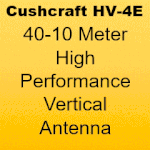12 Volt Auto Power Headed for 36 Volts
Discussion in 'Amateur Radio News' started by KD7JZ, Jun 15, 2003.
- Thread Status:
- Not open for further replies.
Page 1 of 4
Page 1 of 4
- Thread Status:
- Not open for further replies.










